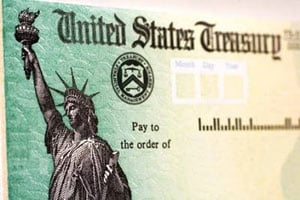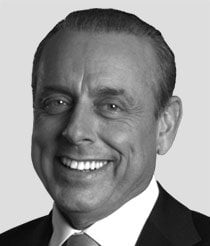What if I told you the safest (and by far the biggest) market in the world isn't safe anymore?
The U.S. Treasury market is worth more than $12 trillion. That's twice as big as the next two biggest nations' debt securities combined - and it's believed without question to be the safest market in the world.
Whenever there's a panic and the markets freak out, investors dump stocks and buy Treasuries. That's the so-called "flight to quality."
However, before the recent new market highs, back on Oct. 15, when the last full-on flight to quality exploded, the U.S. Treasury market failed to do what it had always done.
It failed to be safe.
And nobody's talking about it.
Today, I'm going to talk about it - and I'll show you how this lack of safety will impede your ability to invest and make a profit in the future...
A Flight to Fear
Maybe people aren't talking about it because it seems like so long ago. Maybe it's because stocks have soared since it happened. Maybe it's because it happened so quickly. Maybe it's because nobody really wrote anything about it.
Maybe it's just because it's too frightening to talk about.
 There's no maybe about it. No one is talking about it for all the above reasons.
There's no maybe about it. No one is talking about it for all the above reasons.
Early on Oct. 15, right after the U.S. markets opened at 9:30, for 10 crazy minutes, and then throughout the rest of the day, Treasury prices soared and yields collapsed on 10-year notes.
It was a full-on flight to quality on the heels of Asian stocks getting hit by new recession fears, rising interest rates on European peripheral sovereign bonds, slower growth numbers coming out of China, and blaring headline news about Ebola. Global equity markets were in a panic, and when the U.S. markets opened they tanked.
Trading volume in Treasuries that day soared to a record. The largest interdealer government bond broker in the world, ICAP, tallied $946 billion worth of Treasuries changing hands.
The 10-year yield, which on Oct. 14 was 2.206%, dropped like a stone on the morning of Oct. 15 to just below 1.86% - a stunning 16% drop in a matter of minutes.
Here's what was so scary.
It wasn't the global panic. It wasn't the flight to quality that always happens along with global panic. It wasn't even the fact that yields plummeted so quickly, though that was the by-product of the scariest thing that happened.
What was so scary was that yields plummeted because giant bond traders turned off their automated trading machines.
Hitting the "Off" Switch
Just like in the dot-com tech bust 2000-2002, the global financial crisis of 2007-2008, and the "flash crash" of 2010, traders turned off their automated computer systems.
These usually smooth-running machines easily pick off traders with slower or less sophisticated technology in "normal" times. However, these machines can rack up billions in losses when things aren't "normal."
Charles Comiskey, the top-dog Treasury dealer at the Bank of Nova Scotia, one of 22 "primary dealers" that trade Treasuries directly with the U.S. Federal Reserve, admitted he turned off his machines. So did Jason Rogan, the managing director of Treasuries at investment giant Guggenheim Securities. And plenty of others flipped the "off switch" as well.
Comiskey said, "Once we recognized things started getting out of control, we shut it off immediately." Rogan admitted that "the market was moving too fast for our prices to keep up."
In other words, the traders who buy and sell Treasuries all day every day - especially the biggest dealers with automated computer systems - stopped trading at their usual pace, if they traded at all. They didn't want to end up short on bonds as prices were soaring.
The same thing happens when market-makers in stocks stop buying because markets are tanking and they don't want to be on the wrong side of a falling mountain.
How dramatic was the drop in yields? According to data compiled by Bloomberg, "the magnitude of the decline during trading on Oct. 15 has been exceeded only once in the past half-century."
But there's more to the whole affair. After yields tanked because bond dealers stepped aside, meaning their prices soared, they reversed course in a matter of days.
So, panicked investors bought some $946 billion worth of Treasuries (obviously an equivalent amount were sold) at near record-low yields because the market's machinery cracked, and then righted itself. Meanwhile, billions of dollars were lost when prices that had soared reversed course, leaving buyers who bought low-yielding inventory stuck as prices reversed the next day.
But don't worry. Just as stock traders have forgotten about the flash crash and the global financial crisis and the tech wreck, bond investors will forget the Oct. 15 blowup.
Most of them already have.
Me, I don't worry about freakish happenings in the stock and bond markets. I know they are going to happen.
There's no ghost in the machine somewhere. It's just a matter of fact - how things are rigged these days.
Here's what I am worried about.
I worry about how to profit when the spit and tape holding our once strong markets together comes undone.
It's going to happen, not just in the stock market, but now we know it's going to happen in the bond market, too.
So much for safe and sound.
More from Shah Gilani: The Fed and big banks are too close for comfort, but comments made during recent congressional questioning revealed an ugly truth about the too-cozy relationship between Wall Street and Washington. This would be funny if it weren't so sickening...
About the Author
Shah Gilani boasts a financial pedigree unlike any other. He ran his first hedge fund in 1982 from his seat on the floor of the Chicago Board of Options Exchange. When options on the Standard & Poor's 100 began trading on March 11, 1983, Shah worked in "the pit" as a market maker.
The work he did laid the foundation for what would later become the VIX - to this day one of the most widely used indicators worldwide. After leaving Chicago to run the futures and options division of the British banking giant Lloyd's TSB, Shah moved up to Roosevelt & Cross Inc., an old-line New York boutique firm. There he originated and ran a packaged fixed-income trading desk, and established that company's "listed" and OTC trading desks.
Shah founded a second hedge fund in 1999, which he ran until 2003.
Shah's vast network of contacts includes the biggest players on Wall Street and in international finance. These contacts give him the real story - when others only get what the investment banks want them to see.
Today, as editor of Hyperdrive Portfolio, Shah presents his legion of subscribers with massive profit opportunities that result from paradigm shifts in the way we work, play, and live.
Shah is a frequent guest on CNBC, Forbes, and MarketWatch, and you can catch him every week on Fox Business's Varney & Co.



